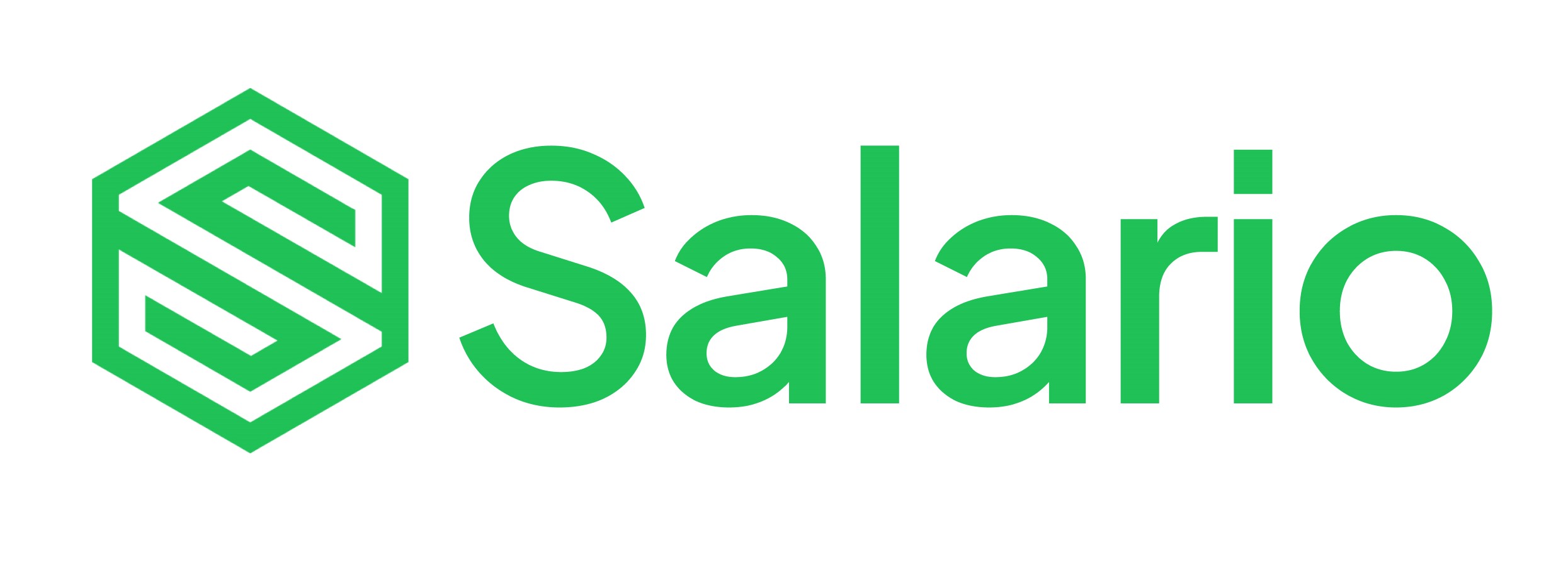
It’s the 27th day of the month, and your phone beeps. You take a look, and a smile quickly skittles across your face. It takes you a couple of seconds to wipe it off as you get back to work with renewed energy. Calculations are already going off in your head, so you quickly dedicate 30 seconds to thank God for your boss and Human Resources (HR). Ever wondered how your salaries are paid or how everyone in the firm receives their payments and bonuses at about the same time periodically?
It’s the 25th day of the month, you have had a lot to deal with, but your employees need to get paid, you look into company accounts and you see that you can survive another month, so you ask HR to ensure that everyone gets their salary on the 27th and you can close accounts for the month. Your head of HR does his magic and everyone is happy.
Efficient payroll management is a vital part of business operations and findings have shown that 49% of employees tend to resume the search for a new job after just two payroll errors. As an employer, you have to ensure smooth payroll operations as they improve productivity and increase the retention rate of employees.
Although well-run payroll management is important for the smooth running of any business, many people in the business world do not know what it is or how it works. We will be taking the time to break down the term Payroll management, and how it works, and right before we end we will look at a couple of future trends in payroll management systems to look out for if you are already versed in the Human Resource ecosystem and want to prepare for the future.
What are payroll, payroll management, and payroll management systems?
Payroll.
Let’s start from the basic term Payroll. The Cambridge dictionary offers two simple and straightforward definitions of Payroll. First, a payroll is a list of the employees of a company that also reflects on how each employee is paid. It also defines the term as the total amount of money paid to the employees of a company. From these definitions, we can infer that Payroll typically deals with how a company handles the payment of its employees, either salaries, bonuses, taxes, or any financial dealings they have with their employees.
Payroll Management

Payroll Management refers to the administration and management of employee payments and the record keeping of such processes. It covers the collection of payroll data, deduction of Payroll Taxes, compliance with statutory provisions, and so much more.
Payroll Management Systems
A payroll management system refers to the process of implementing systems to efficiently manage a company’s payroll. There are various types of Payroll systems, and they affect how well a company can manage its employees’ payments.
Types of Payroll Management Systems
There are essentially four (4) types of payroll management systems available to any organization lets examine them briefly.
Internally Managed or Inhouse Payroll System
Internally managed payroll system involves managing your payroll yourself, or through an employee. It is often done manually by the head of the business or by someone appointed by them. This system is best for small business with few employees.
Bookkeepers or Certified Public Accountants (CPA) managed system
This type of payroll management involves outsourcing to a professional bookkeeper or Certified Public Accountant (CPA). The expertise of these professionals makes payroll management easy for a growing company.
Agency-managed system.
This is another form of outsourcing that involves hiring a payroll management agency to handle your company’s payroll. A great advantage of this type is that they take up all your payroll concerns and are quite accurate in carrying out their jobs.
Software-managed Payroll system.
This involves using a payroll management software equipped with automation tools to handle your company’s payroll. Here you have a level of control, and also the accuracy of automation.
Benefits of a Payroll Management System
There are a host of benefits you get when you use a good payroll management system, here are just a few of these benefits.
Efficiency and time-saving
One of the basic benefits of a good payroll system is that it is efficient and saves time for your company. Time that could be better spent on productive endeavours. No one wants a grumpy employee, especially when a late pay is the cause of the employees grumpiness.
Accurate record keeping

You can better manage payment records and go over past payment details with an effective payroll management system. This helps you know when to give bonuses, and keeps you financial records in order when you need to audit your accounts.
Compliance with legal requirements
A great benefit of a payroll management system is constant compliance with regulations and laws. A good software-managed payroll system automatically updates and complies with local legal payroll requirements, while outsourced or in-house systems keep themselves abreast of new laws and regulations on employee payments in their areas.
Employee satisfaction.
If you want to keep your employees satisfied, paying them on time is a key factor to consider. A payroll management system worth it salt takes care of this concern for you, keeping both you and your employees satisfied.
Data Security.
Another benefit of a payroll management system is that it helps to keep your employee’s data safe. Payroll data such as bank account information, and salary details vital and confidential. An efficient payroll management system improves data security by implementing secure data retention and accessibility restrictions to prevent unauthorized access to employee information.
Key Features to Look for in a Payroll Management System

There are a lot of payroll management systems available to businesses, but not all of them meet the standards necessary for effective payroll management. Here are some key ‘must-haves’ to look out for when searching for a payroll management system.
- Time-tracking integration – Every credible payroll management system or software must have an accurate system for recording employee hours.
- Tax calculation and filing – A good system must be able to take way the stress of calculating and deducting tax for your employees.
- Direct deposit – A good payroll system should provide for direct bank payment for employees, this reduces the stress of multiple transactions.
- Reporting and analytics – You should be able to get comprehensive reports and data from your payroll management system. It aids in better decision making.
- Employee Self-service – Your employees should have a level of access to their payroll management system, especially for profile updates and changes.
Steps to Implement a Payroll Management Software
If you have never implemented a payroll management system before, have only been used to manually managing your employee payroll or are tired of your current payroll software, then you need an action plan to help you switch and set up a working system. Here are a couple of steps to help you set up a great HR payroll system.
Assessing business needs
The first step you need to take is to properly assess your current payroll system or the lack of one, and what would work best for your business. If you are unable to figure out your needs, you would most likely not find the best system for you right away. Assessing the needs of your company can further help in setting your expectations and goals for the new system you are looking for.
Research and Choosing the right system
Once you have been able to note down your needs, goals and expectations, its time to kick of your research. There are a host of payroll software on the market, and picking the right one is not a game of luck. You need to check pricing, essential features available, compliances with local laws and regulations, the reputation of the system and its vendor, and other key factors, before picking a software.
Integrating with existing systems
Once you have selected payroll management software, payroll integration is the next task to cross off your implementation process. If you don’t have an existing online system, moving to one is quite easy as you just need to upload the necessary employee details on the new system. If you have an existing online payroll system, it might take a little bit more work, as you will have to move existing data and complementing systems from the old software to the new. Some payroll software makes this easy with integration features, while others do not, so you might have to manually enter the necessary data.
Run test payroll
Once you have set up your new system, you must run a test payroll process to ensure that everything is properly set up.
Training staff and employees
The final step here would be to train your HR staff and employees on using the new payroll system. This could be done by the vendors of the new system or you could do this yourself.
What are the main stages of Processing Payroll?
There are three 3 key stages that human resource managers go through in the payroll processing journey.

Pre-payroll Stage.
There are three key tasks at this stage.
- Policy Definition – What policies guide payments and general employee activities, i.e, salary range, bonuses, leave, etc.
- Data Collection – The necessary employee data should be collected at this stage, account number, Social Security Number or National Identification Number, etc.
- Input Validation – Data collected should be verified.
Payroll Stage
This stage involves the management and processing of employee’s pay, but can be divided into three.
- Compliance Check – Check local tax and labour laws and regulations and make necessary adjustments.
- Calculation of Pay – Calculate gross and net pay after necessary deductions or additions.
- Payroll Review – Review the calculations and application of existing laws for accuracy before payouts
Post-payroll stage.
This stage can also be divided into three.
- Payouts – Calculated payments are paid to employees, either in cash or through your payroll management system.
- Filing Reports – Necessary reports to be filed to both internal (finance department, audit department, etc.) and external (Government agencies, external auditors, etc) bodies.
- Record Keeping – Maintain accurate records of all payroll transactions for future reference and compliance purposes.
What Future Trends in Payroll Management Systems should you look out for?
The only constant in this world is change, and those who are not prepared for changes in their sectors will be swept away by it. As we promised earlier, here are some of the trends to look out for in the future of payroll management.
The GIG economy
The Gig economy refers to a labor market system that heavily relies on outsourcing services to independent contractors and freelancers; this is usually on a temporary or part-time basis. While this economy blossomed due to the pandemic, there is still room for growth. About 40% of companies are beginning to move toward gig workers. As an employer, you need a Payroll Management System that provides for this change.
Artificial Intelligence (AI) and automation
One of the major trends in almost every industry, especially after the pandemic, is the improvements in AI technology and automation. Many payroll management software have begun to use AI in their systems. Coupled with automation, this has a lot of advantages, including:
- Streamlining repetitive payroll tasks
- Breaking down complex payroll data for regulation compliance
- Faster payroll processing
- Easy identification of patterns and anomalies in payroll activities
- Reduction of errors in Payroll processes
Payroll, Blockchain and Cyber Security.

Data security is one of the hallmarks of a good payroll management system, and the blockchain’s reputation as a secure data platform has made it an attractive solution to cybersecurity challenges. As an employer, you will need to know more about the blockchain and how it affects your company’s data security.
Global Payroll
Many companies are going global with their hires, and if you are one of them, you need a payroll management solution that makes this transition easier. There are a number of payroll management systems like Salario, Bento, Sage, etc that help companies prepare for a global future, and cater for employees across the globe.
Conclusion
If you move or get married, that has to be changed with HR, payroll, medical insurance, life insurance, etc. It is a huge administrative headache that requires a full-time staff. Parker Conrad
With great payroll management software, some of the challenges Parker Conrad identifies can be easily solved. A good payroll management system undoubtedly ensures satisfaction for both the employer and employees.
Before we round this insightful guide up, here are some tips to ensure that you manage your payroll properly, either manually or with a software solution;
- Document every process.
- Prioritize data security.
- Provide payroll training for your employees.
- Audit your payroll management system periodically.
Payroll management is vital for your business, and choosing a payroll management system that meets your needs can eliminate many employer-employee issues.

Great read!!
Very informative and well explained